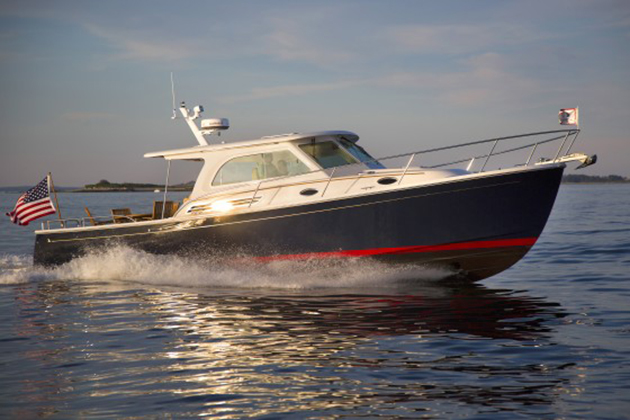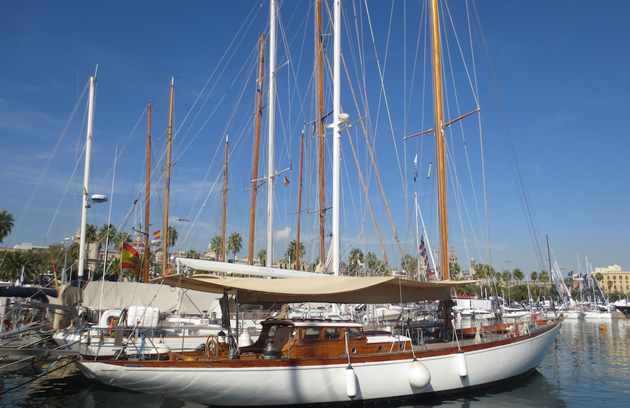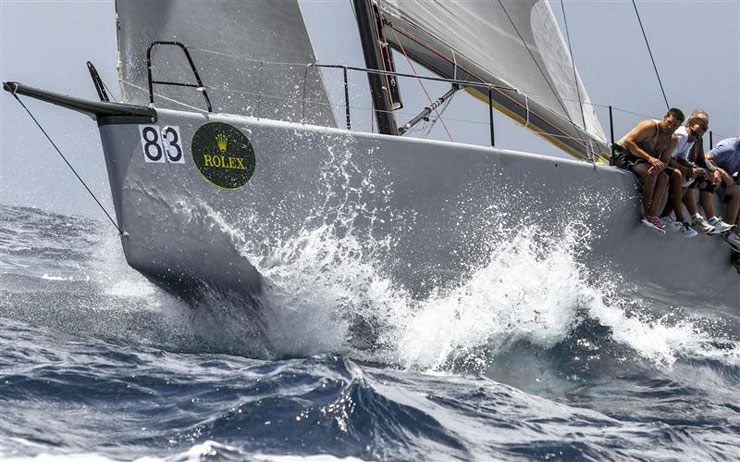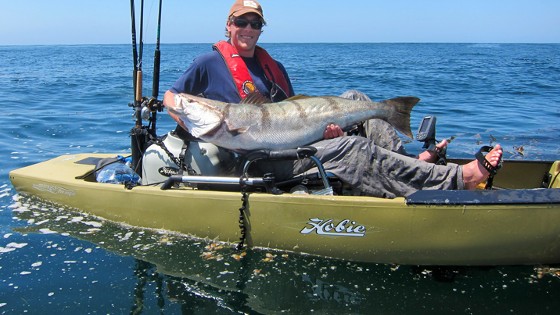When is a Boat Also a Yacht?
All yachts are boats, but not all boats are yachts: the distinction is determined by size, price, and attitude.
So maybe you’ve just bought a boat and joined the local yacht club. Does that mean you can call your boat a yacht? The answer is, it depends.
When I started writing about boats nearly two decades ago, the Mason-Dixon line stood firmly at 80 feet. That was the length overall where we stopped calling a model a “boat” and switched to the term “yacht.” Editors, at the time, reasoned that once a boat owner hit 80 feet length overall, hiring a crew was no longer an option. Owner-operators had boats. Those with hired crew were yachtsmen, and therefore, their vessels were called yachts.
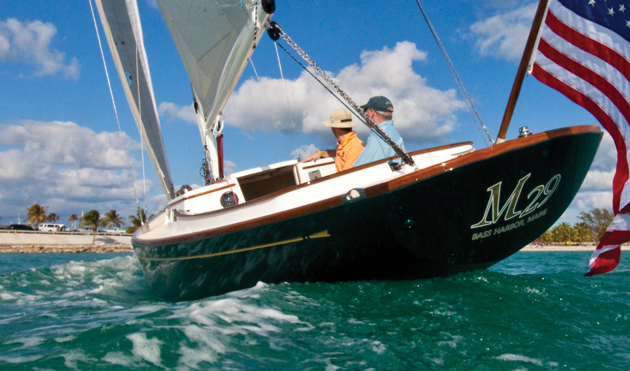
The Morris M29 is definitely a yacht, in spite of her lowly length of 29'2". Photo: Onne van der Wal
A lot has changed since then. Just five of today’s 20 biggest yachts in the world even existed in the year 2000. Owners can’t dream of breaking into that Top 20 rarefied air anymore unless their yacht is not 200 or even 300 feet length overall, but instead a minimum 400 feet on the LOA spec. We’ve had to invent all new terms for different sizes of increasingly mammoth yachts: When “mega” was no longer enough, we started calling them superyachts, which used to start at about 100 feet long, and which many people nowadays say start around 150 feet long. Then came the gigayachts, which, in some harbors, literally block out the sun for all the other “average yachts” around them. Call them about 300 feet and longer, give or take.
And what used to be thought of as a megayacht—say, in the 100- to 130-foot range—is now often described as a midrange yacht. The Westport 130, for instance, came into existence in 2000, and back then, it seemed enormous. Today, more than 40 of them have been built, with orders still being taken for the updated version—and Westport also offering a 164-footer, for owners of the 130 who have outgrown their rides.
Beyond that, size ranges that used to be considered “custom build only,” with one-time designs being created for single, lucky owners, are now filled with series options that can be highly personalized, but that come off the production line far faster than the three years or more that used to be necessary. Amels, for instance, has sold more than 30 of the hulls in its Limited Editions series, which ranges from 180 to 272 feet length overall (two decades ago, if you’d tried to tell a yachtsman that he could have a 200-foot yacht inside of two years, he would’ve tossed you into the drink while laughing hysterically).
And as the superyachts have become more and more super, their tenders have increased in size as well. We now have all kinds of boats being designed as “superyacht tenders/day boats,” meaning that the richest of the rich can have them as toys while the rest of us can have them as our primary rides. This summer, HCB Center Console Yachts is scheduled to launch its 6500 Estrella—believed to be the world’s largest center-console boat yet, with a whopping five 627-hp Seven Marine outboards for power. Put this 65-footer next to all the other center consoles, which tend to be more in the 20- to 30-foot range, and she’ll look more like a yacht than a boat, for sure.
And funnily enough, the superyacht owners with toys like the 6500 Estrella? They call them “tenders,” while they call their motherships “boats.”
Much like the old saying that if you have to ask how much it costs, you can’t afford it, the truth is that if you have to call it a yacht to impress people, you’re failing to understand the true value of owning a boat—at any length overall.
Yacht Size and Price
Since we can no longer determine yacht status by propulsion type, we turn to size (and by association, value). Obviously the bigger and more expensive a boat is, the better her chances of being considered a yacht. Anything over 40 feet long almost always qualifies. (Above 100 feet we move into mega- or even super-yacht territory, but if you own something that big you’re probably quite secure in your yacht status and hence not reading this.)
It’s a little trickier to determine the bottom end of the yacht length scale. A recent random and completely unscientific survey of a group of respected yachtsmen established an equally random 33 feet as their minimum required LOA to achieve yacht status. When pressed, not one could come up with a reason more specific than it “just seems right.”
Another random survey of another group of equally respected yachtsmen might come up with a different minimum length, so size is not the only aspect we have to consider—which brings us to the most important and hard to define aspect of yachtiness: attitude.
Yacht Attitude
Just as a cocky walk would never be mistaken for a limping shuffle, yacht attitude is the net result of a combination of factors that are easy to spot as a group but hard to quantify individually. First of all, looks count. And though exactly what makes a boat look “yachty” will vary with personal taste, even Webster’s New Collegiate Dictionary includes a “sharp prow and graceful lines” in its definition.
Cosmetics count too, especially varnish—both in quantity and quality. More is better, and it must be gleaming (at least from 50 feet away). A shiny hull is also mandatory; no chalky gelcoat allowed. (If this is your boat’s particular challenge, watch our YouTube video, How To Restore Faded Gelcoat.) Extra credit is also given for shiny hardware, neatly coiled lines, jaunty ensign angles, and properly flown burgees.
What’s out of sight down below can also be factored in, though it is less important than that crucial topside first impression. Varnished trim in the cabin earns big style points (and it’s a lot easier to maintain than that varnish on deck). A proper galley, enclosed head, and comfortable bunks create a homey atmosphere that definitely improves the attitude score.
Privacy, however, is not a requirement. Back when yachts were sailboats, everyone camped out together in one cabin—except for the paid hand, who bunked down in the foc’sle. Today’s emphasis on separate cabins might be nice for couples who want to cruise with friends without learning all of their strange pre-bedtime rituals, but more doors that close will not improve the chances of turning your boat into a yacht.
There are two more factors that can make or break a yacht’s attitude: time and owners.
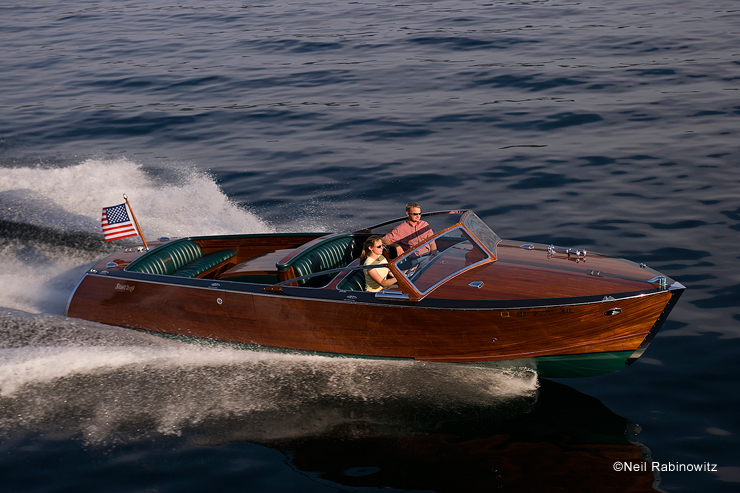
Cosmetics count, so a gleamingly varnished mahogany hull places this 27' Stancraft LowBoy on the yacht list. Photo: Neil Rabinowitz
Time is Yachty
Careful maintenance and constant upgrades can turn a boat into a yacht, while neglect can definitely downgrade the same vessel back to lowly boat status. That’s because time is money, especially when it comes to boat maintenance and repair. Most yachtsmen hire craftsmen to maintain and upgrade their vessels, while boaters tend to do their own work. Even basic maintenance requires specialized expertise, and doing things right (or rather, having things done right) is a very important aspect of yachtiness. You can't pay someone else to walk that cocky walk, but you can pay someone else to keep your boat looking yachty.
Yacht Owners
Last but certainly not least, yacht status can hinge on the owners themselves. If you are more Grey Poupon than French’s mustard, more monogrammed than markdown, and more Topsider than sneaker, you will probably be able to transfer your own attitude over to any vessel you own. This may, however, take several years—so it might be easier and faster to just go buy a bigger fancier yacht.
The important thing to note about attitude is that it is completely unrelated to length or price. Most boats under 33 feet that are singled out as yachts have nice lines, carefully maintained cosmetic details, and radiate a quiet dignified air of tradition. Attitude may be the hardest to quantify, but I would argue that it is the biggest factor in determining whether a boat should be called a yacht or not.
Which brings me to a burning question: Why do you want to call your boat a yacht?
The word certainly carries a lot of baggage. It smacks of wealth and privilege along with elegance; that’s why a sentence with the word “yacht” in it often ends with a finger-waving “dahling”. (Of course, if you're reading this, that exclusivity could be just what you're after.)
Because “yacht” and “yacht racing” both sound so elitist, many organizations have dropped the term from their names over the past few decades. Even the Olympic sport changed its name from “Yachting” to “Sailing” in time for the 1996 Games. British sailors, however, still join the Royal Yachting Association, which makes sense. Any name that starts off with “Royal” can't worry too much about being elitist.
The future of yachting
Twenty years from now, will the word "yacht" be a thing of the past? I think we'll still be using it, though what ranks as a yacht will undoubtedly continue to evolve. Even as bigger, more powerful boats become more and more common, I don’t think the minimum size to achieve yacht status will increase. Many 30 footers now carry more amenities than traditional yachts over 40 feet long—and remember, what’s down below counts too. So arbitrary as it may seem, that 33 foot rule might have some staying power.
I would also argue that attitude will continue to be the biggest factor in yachtiness.
But enough about the etymological future: can you call the boat you own right now a yacht? If any more than three of these five items are true, you pass the test:
1. You refer to your boat as “she” rather than “it”
2. Maintenance and upgrades are done by someone else
3. You deduct the loan payments by considering the boat as a second home
4. Etiquette and clean feet are more important to you on board than on dry land
5. Gawkers from the dock often say “Nice yacht,” with a straight face
And if you’re still not sure after wading through this entire story, it’s probably safe to assume: your boat is NOT a yacht. And for most of us, that’s probably just fine.
Editor's Note: This article was originally published in July 2015 and updated in June 2018.
